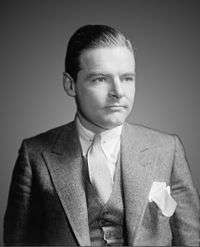Republican Party vice presidential candidate selection, 1960

This article lists those who were potential candidates for the Republican nomination for Vice President of the United States in the 1960 election. After winning the Republican presidential nomination at the 1960 Republican National Convention, Vice President Richard Nixon needed to choose a running mate. President Dwight D. Eisenhower strongly supported UN Ambassador Henry Cabot Lodge Jr..[1] Though Lodge lacked charisma as a campaigner, his foreign policy experience and stature as ambassador made him an appealing candidate.[1] However, Lodge was unpopular with the Republican right, who did not want a Northeastern moderate on the ticket.[1] Nixon also strongly considered conservative Minnesota Congressman Walter Judd and moderate Kentucky Senator Thruston Morton.[2] After a closed session with Republican Party leaders, Nixon announced his choice of Lodge.[2] The Republican convention ratified Nixon's choice of Lodge. The Nixon-Lodge ticket lost the 1960 election to the Democratic ticket of John F. Kennedy and Lyndon B. Johnson.
Potential running mates
Finalists
- Ambassador Henry Cabot Lodge Jr.
- Kentucky Senator Thruston Morton[1]
- Minnesota Representative Walter Judd[2]
Others
- New York Governor Nelson Rockefeller[3]
- Michigan Representative Gerald Ford[3]
- Secretary of Labor James P. Mitchell[3]
- Secretary of Interior Fred A. Seaton[3]
- Indiana state representative Philip Willkie[2]
- Pennsylvania Senator Hugh Scott[2]
- Illinois Senator Everett Dirksen[2]
- Secretary of the Treasury Robert B. Anderson[2]
Ford would eventually be chosen as Vice President by President Nixon in 1973 to replace Spiro T Agnew and Ford would succeed to the presidency when Nixon resigned in 1974.
See also
References
- 1 2 3 4 Donaldson, Gary (2007). The First Modern Campaign: Kennedy, Nixon, and the Election of 1960. Rowman & Littlefield. pp. 90–91. Retrieved 6 October 2015.
- 1 2 3 4 5 6 7 Pietrusza, David (2008). 1960: LBJ Vs. JFK Vs. Nixon : the Epic Campaign that Forged Three Presidencies. Sterling Publishing Company. pp. 225–230. Retrieved 6 October 2015.
- 1 2 3 4 Sigelman, Lee; Wahlbeck, Paul (December 1997). "The "Veepstakes": Strategic Choice in Presidential Running Mate Selection". The American Political Science Review. 91 (4): 858. JSTOR 2952169.